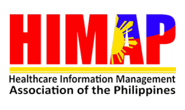
Hire full-time, outsourced teams in the Philippines.
Ready to work in as little as six weeks.
Achieve unparalleled, sustainable growth while maintaining complete operational control.

Reduce costs
Outsourcing allows your organization to be more competitive, sustainable and profitable with 70% labor cost savings.
Increase quality
& efficiency
Remote staffing solutions rectify skills shortages and improve internal processes by accessing global talent pools.
Scale faster
Tailor your offshore operations to help scale quickly, meet demand, combat rising labor costs and access specialty talent all without the overheads.
What our clients say

Dan Hastings Chief Financial Officer of Oaks Hotels and Resorts
"... grown exponentially since we moved. We found, in Australia, we were challenged by high turnover because it wasn’t a career path for a lot of people, it was a stepping stone to other roles. Our business was just spinning wheels."
Daniel Oh Group Legal Counsel at Connective
"What really stood out for us with MicroSourcing was the amount of control we got over staff selection, the IT setup, cybersecurity measures, data protection and the level of support, both in Manila and locally in Australia."

Luke Loeffler Senior Director for Operations at EagleView Technologies
"Take advantage of the direct control and freedom to implement processes and the true partnership that MicroSourcing offers."

Darren Gunton General Manager of Marketing at Total Tools
"What I love most about partnering with MicroSourcing is it just makes my life easier."
Leverage big-business infrastructure
No matter the size of your business, you gain access to our big-business outsourced infrastructure.
Businesses who engage in business process outsourcing (BPO) save 70% on employment costs.
Is outsourcing right for your business?
We’ve got a team of offshoring specialists who can help answer this question - or any others you might have. From offshore pricing models and securing quality offshore teams, to labor cost savings and sourcing specialist talent in the Philippines. Give us a call now on +1 888-731-0023 or send us an email.
We’re experts at offshore outsourcing and we’re here to help.
Find the talent you need no matter the industry, team or role
Unlock endless offshore potential when you partner with MicroSourcing.


























